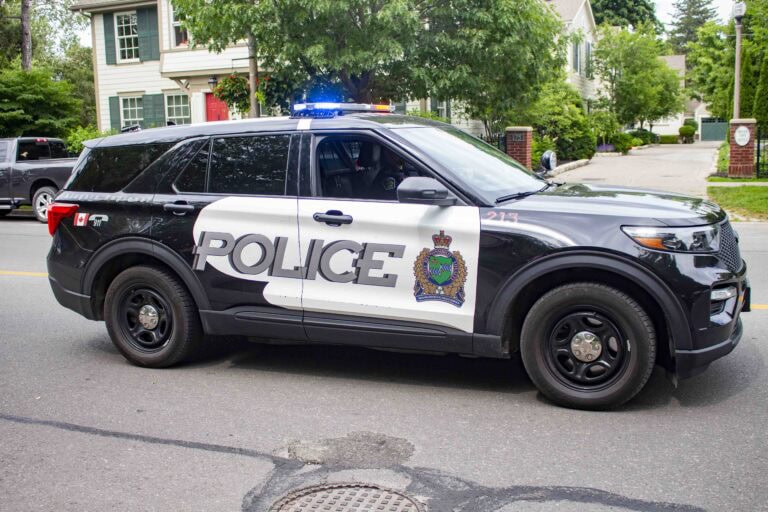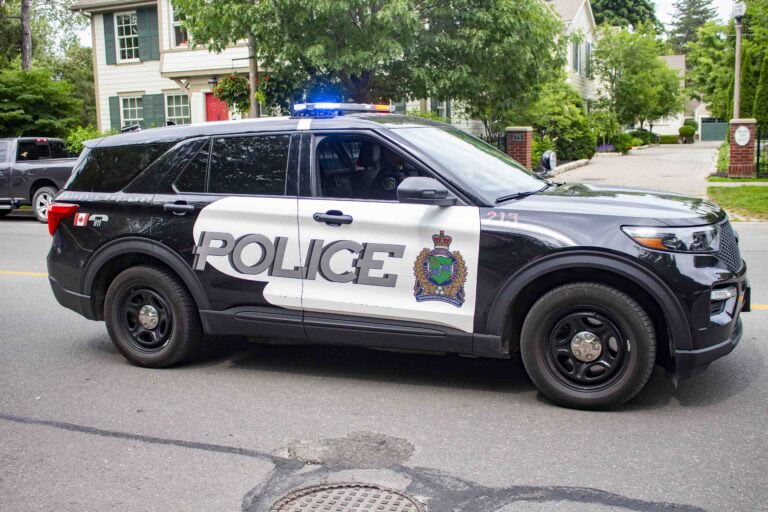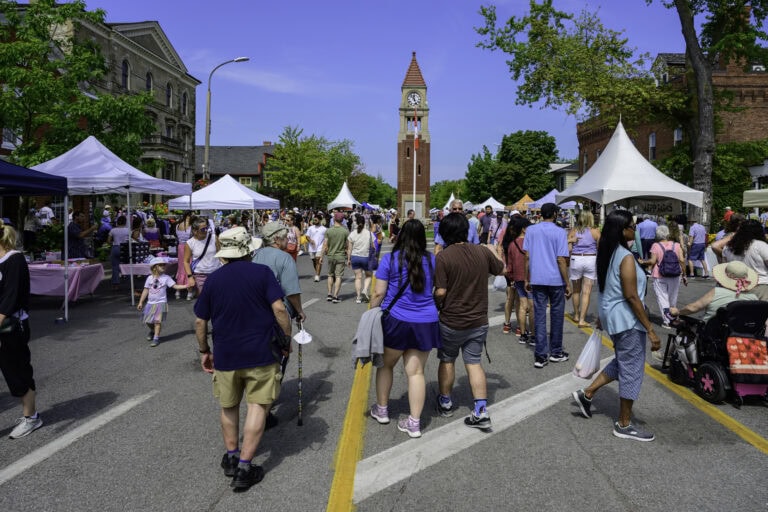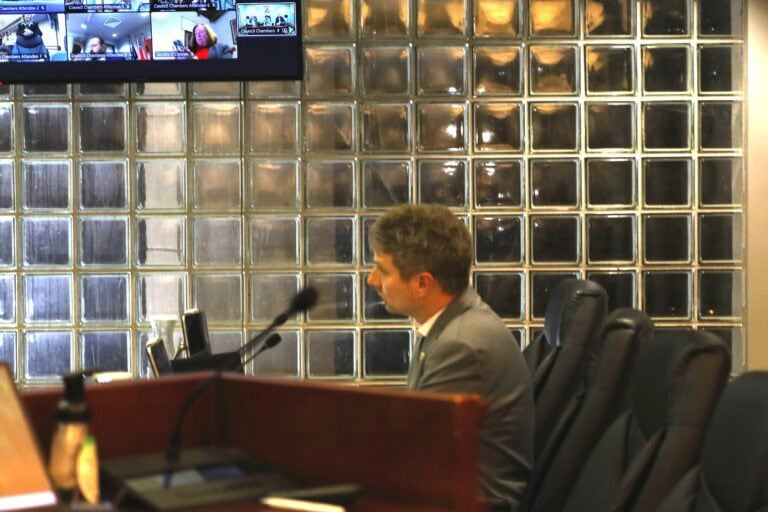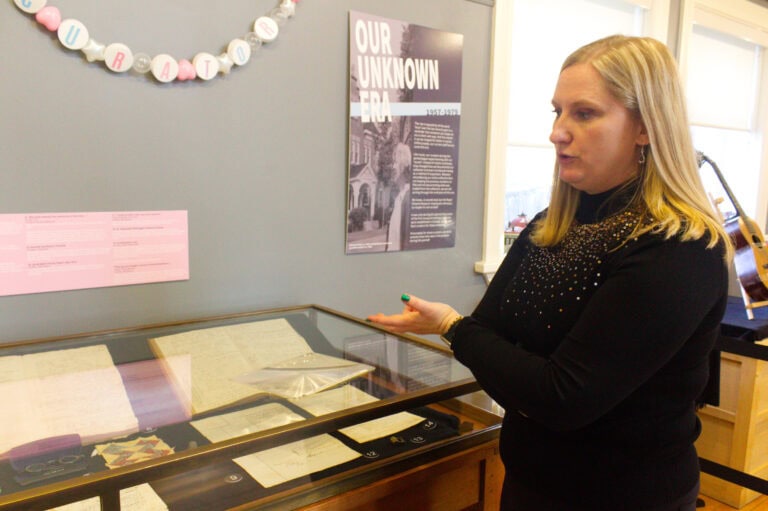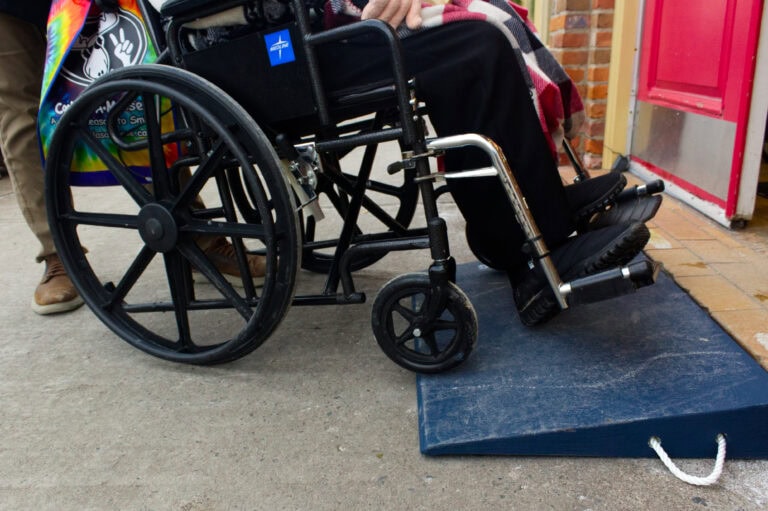Around 250 historical re-enactors pitched tents at Fort George last weekend to bring events of the War of 1812 back to life.
More than 650 visitors attended the commemoration of the 212th anniversary of the Battle of Fort George, which included one of the site’s largest demonstrations — an American sneak attack.
The re-enactment portrayed British and American soldiers emerging from two sides of Parade Square, former training grounds now used for the fort’s largest demonstrations.
A large crowd gathered to watch both sides shoot muskets, launch cannons and navigate the terrain as they approached one another.
Daryl Learn, a historical storyteller, narrated the demonstration. To prepare for the weekend, he conducted additional research about military tactics and artillery used during the War of 1812.
“A lot of it is discussion with your fellow re-enactors, sharing that information and a lot of reading and passion toward the subject,” Learn said.
The process of researching the history of war not only prepares Learn for a detailed narration of a battle re-enactment, but also builds empathy toward others around the world, he added.
“We haven’t felt the scourge of war here in over 200 years … and we lose touch of that,” Learn said.
“When we hear about things in Syria, Myanmar or Ukraine, we think that’s an over there problem … but at the end of the War of 1812, almost every building along the Niagara River had been destroyed.”
Learn said he hopes to continue spreading awareness through events like Fort George’s — an attitude expressed by other re-enactors involved in the U.S. sneak attack demonstration.
Kevin Garrett portrayed a company sergeant in the re-enactment. The role’s main responsibility is the safety of the soldiers, which in a heat wave means ensuring they are drinking enough water and staying cool.
Part of being a re-enactor means being a community member, Garrett said. He said each person’s passion for history builds relationships that make event weekends more fun.
“We’ve got doctors, lawyers, salesmen, exterminators, teachers, people from all walks of life with this one connecting thing, which is a love of history,” Garrett said. “And when people don’t know their history, they are unaware when things are happening again.”
He said one challenge in participating in a large-scale demonstration is maintaining physical fitness and situational awareness, especially when multiple people are using artillery on the field.
But when the fort closes its doors at the end of the day, re-enactors get to recreate history in a different way.
The out-of-town re-enactors who participated in the Battle of Fort George event camped in tents at Parade Square and stuck to traditional ways of living for the weekend.
“Some of us cook full meals over the open fire,” Lisa Beadle, a re-enactor from Hamilton, Ont., said. She and her boyfriend, Rick Peterson, both acted in the U.S. sneak attack.
Peterson said the re-enactors socialize, dance, sit at campfires and occasionally host soirees once the sun sets.
“It’s a magical place at night,” Beadle said. “There’s fires and lanterns, music, everyone is in period dress, so it really is like time travel.”
When demonstrations are in full force, the couple said a sense of respect for the soldiers overcomes the ones re-enacting their work.
“The noise and the fog of war give you an idea of how terrifying it was for those men, and we always remember them,” Beadle said.
“It gives us an appreciation of the struggles of everybody in the country … the people who lost husbands and brothers, their homes, crops, livestock, livelihood, so there’s a lot of stakes,” Peterson added.
Peterson is a mid-level officer, a role that includes managing the group of soldiers on the battlefield. He said this kind of organizing can be compared to the work of a sports coach.
“You’re organizing 10-30 people … it’s kind of the same as if you were a football coach or organizing a corporate picnic. There’s a lot of thought that goes into it,” he said.
The Battle of Fort George and, more broadly, War of 1812 weekend included demonstrations on Saturday and Sunday.
Some re-enactors, like Kevin Lyn and his father Stephen from Mississauga, Ont., re-enacted on one day and watched the other.
Kevin said the re-enacting experience differs significantly from the viewing experience.
“I’ve watched myself (on video) afterwards, but I never get to just watch and appreciate the battle,” Kevin said. “The tunnel vision you get on the field means all you focus on is reloading and listening to orders.”
“You don’t get to look at the whole picture,” Stephen added.
When a specific battle, like the Battle of Fort George, is re-enacted, accuracy in the demonstrators’ movements is key. But when a general event, like last weekend’s U.S. sneak attack, is portrayed, there is less emphasis on following a script or choreography.
“If the Americans were being stubborn and were supposed to fall back but wouldn’t, the British commander might bring troops … and actually push into the flank,” Stephen explained, referring to the outskirts of a military formation.
This means any historical re-enactor must be well-versed in the military tactics of the period they are recreating.
Re-enactors at Fort George weren’t the only ones who recognized the War of 1812 last weekend.
A panel discussion with Donald Hickey, an acclaimed War of 1812 historian, and Ronald Dale, a historian and genealogist from Niagara-on-the-Lake, was held at the NOTL Museum to explore the event’s ongoing sociopolitical presence in North America.
Fort George’s next big event is the Fort Major’s Tour, where guests are given an in-depth tour of the site and can handle artifacts from the War of 1812.
The first Fort Major day was on July 7, and the remaining dates are Aug. 4 and Sept. 4.






